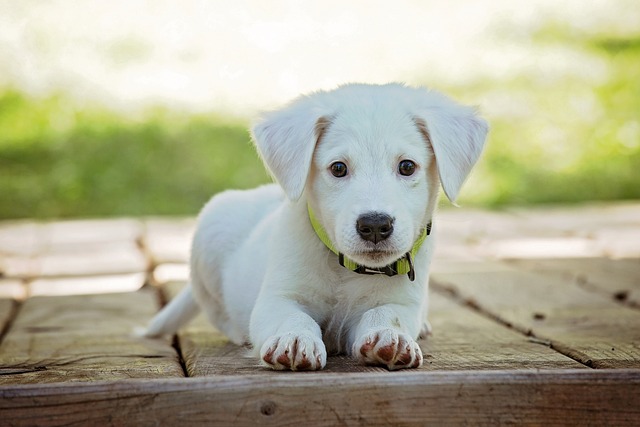
How to Supplement Calcium for Labrador Retrievers
Picture your Labrador Retriever bounding across the yard—those powerful legs need strong bones. Let’s explore science-backed calcium supplementation with real pet parent stories,
Choosing the right leash for your dog feels simple, right? Walk into any pet store or browse online, and you're hit with a dizzying array: thin nylon, thick leather, retractable cords, colourful biothane, heavy-duty chains. It quickly becomes clear this isn't just about picking a colour. The leash you select is a crucial piece of safety equipment, impacting control, comfort, and compliance with local rules. So, let's untangle the options and find what truly works best for you and your furry friend.
Let's start with the classic: the flat leash. Usually made from nylon, leather, cotton, or biothane, these come in various widths and lengths (typically 4-6 feet). They're the workhorse of the leash world, reliable and straightforward. A wider, sturdy flat leash (maybe 1-inch wide) offers excellent control for strong pullers or larger breeds. Leather develops a beautiful patina but needs care; nylon is durable and washable; biothane is waterproof and easy to clean – perfect for muddy walks or rainy climates. The fixed length provides consistent control, which many trainers prefer, and they meet most municipal leash law requirements perfectly. Just ensure the clasp is sturdy and the material feels comfortable in your hand during longer walks.
Then there's the retractable leash. These feature a thin cord or tape wound inside a plastic handle with a braking mechanism. They promise freedom, allowing dogs to explore further ahead (sometimes up to 16 or 26 feet!). This can be great for well-trained dogs in wide-open, safe spaces like empty beaches or large fields. However, they come with significant caveats. That thin cord offers minimal control in an emergency, can cause nasty rope burns if it wraps around skin, and easily tangles. Importantly, many local ordinances in both the US and Europe explicitly require dogs to be leashed and under control – often interpreted as a fixed-length leash held close. Retractables can also encourage pulling behaviour. If you use one, choose a tape version over cord for slightly better visibility and grip, ensure a robust brake, and only deploy the full length in genuinely safe, open areas away from traffic, cyclists, or other dogs. Never use them near roads.

For specific needs or enhanced control, specialized leashes step in. Traffic leads are very short (12-18 inches), designed for keeping your dog literally heeled in high-distraction or high-risk environments like crowded streets, vet waiting rooms, or during specific training exercises. They offer maximum control where it's critical. Adjustable leashes feature multiple rings, letting you quickly switch between lengths (e.g., from 6 feet to 3 feet). This versatility is handy for navigating between open paths and busy sidewalks. Double-ended leashes (like couplers for two dogs, or a main leash with a second clip) offer utility for walking multiple calm dogs together or attaching a harness at two points for better steering on powerful breeds (though proper harness fit is key). Reflective or LED leashes are non-negotiable for dawn, dusk, or night walks, significantly increasing visibility for everyone's safety – a simple step that aligns with responsible pet ownership everywhere.
So, which reigns supreme? Honestly, there's no single "best" leash for every dog or situation. The ideal choice depends heavily on your dog's size, strength, training level, temperament, and your typical walking environment. A sturdy 6-foot flat leash made of comfortable, durable material (nylon, biothane, or leather) is arguably the most versatile, reliable, and universally compliant choice for everyday walks in neighbourhoods or parks. It provides consistent control, meets standard leash laws requiring a fixed length and direct restraint, and minimizes tangling hazards. It's the baseline recommendation from many trainers and safety advocates.
Retractables fill a niche for controlled exploration in appropriate settings, but require extreme caution and awareness of local restrictions – they are not suitable for general sidewalk use or untrained dogs. Traffic leads and adjustable leashes solve specific problems effectively. Remember, compliance with local leash laws is paramount. These laws exist for public safety, wildlife protection (especially in parks and nature reserves), and your dog's own safety. Ignoring them can result in fines and, tragically, preventable accidents. Beyond legality, leash choice is about respect: respect for others who may be fearful of dogs, respect for wildlife, and respect for shared public spaces like cafes or outdoor markets where keeping your dog close is simply good etiquette.
Ultimately, the "best" leash prioritizes safety, control, and legality. Consider your dog's needs realistically, be honest about their training and behaviour, and factor in your local environment and regulations. Invest in quality hardware – a strong clasp and sturdy construction matter. Don't underestimate comfort; a leash that hurts your hand won't be held securely. And please, make visibility a priority after dark. Choosing thoughtfully ensures every walk is safer, more enjoyable, and hassle-free for both ends of the leash, keeping tails wagging responsibly within our communities.

Picture your Labrador Retriever bounding across the yard—those powerful legs need strong bones. Let’s explore science-backed calcium supplementation with real pet parent stories,

Seeing your dog in pain is heart-wrenching, especially when they can’t tell you what’s wrong. Abdominal pain—whether from a tummy ache or something more serious—needs gentle, cautious care.

Picture your once-vibrant red Corgi now sporting a patchy, washed-out coat—those iconic hues can lose intensity for surprising reasons.

Life with a dog is full of joy—but let’s be real, even the most attentive owners can fall behind on vet appointments. Maybe you forgot a reminder, got swamped at work, or your pup’s last shot visit was so stressful you needed a breather.

Welcoming a new puppy into your home is like adding a fuzzy, energetic little roommate who relies on you for everything—including their health. As a new pup parent, it’s only natural to wonder about those all-important vaccinations.

ntroducing vegetables to your Golden Retriever puppy’s diet can offer valuable vitamins, minerals, and fiber – but not all veggies are puppy-friendly.